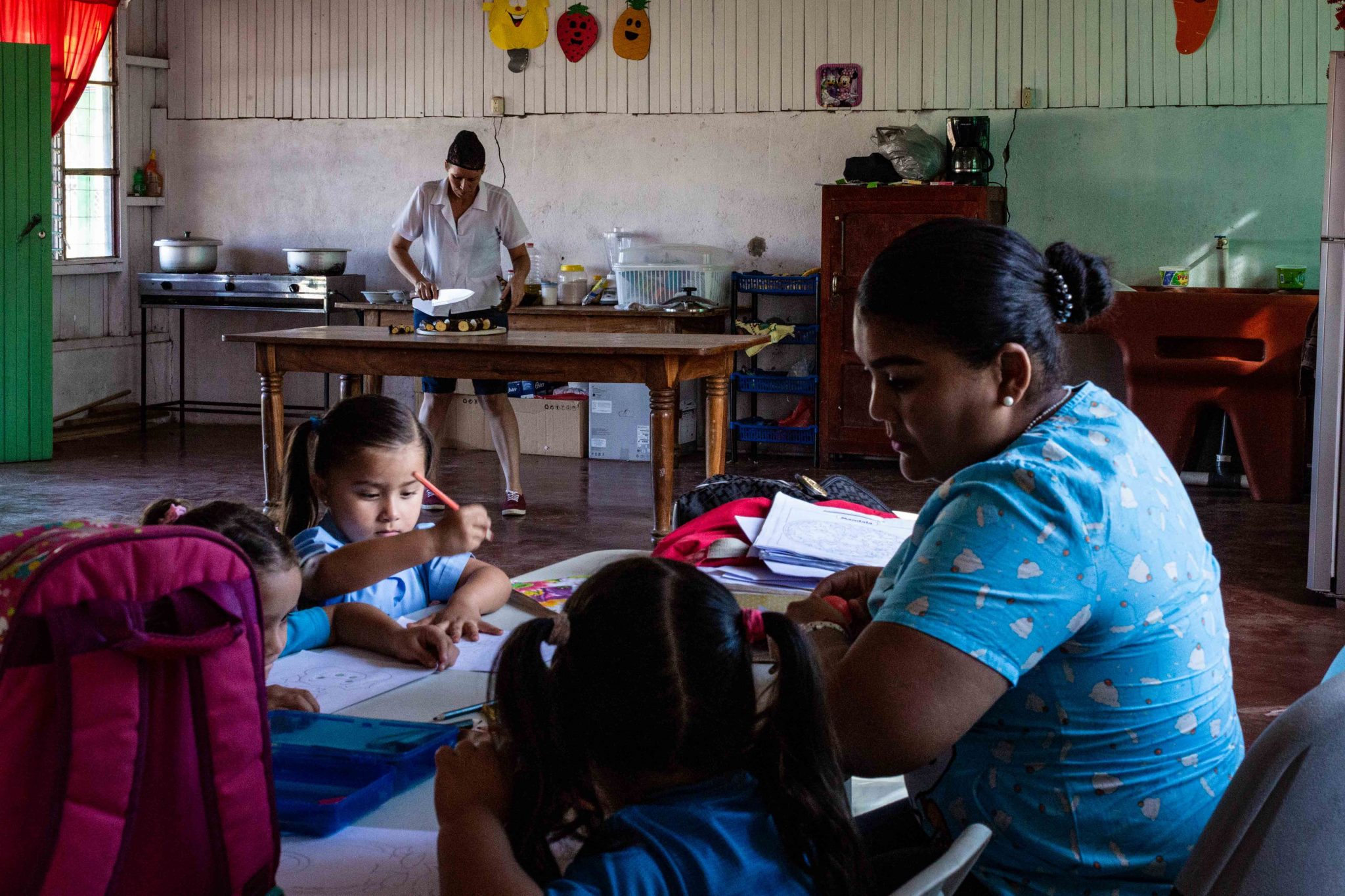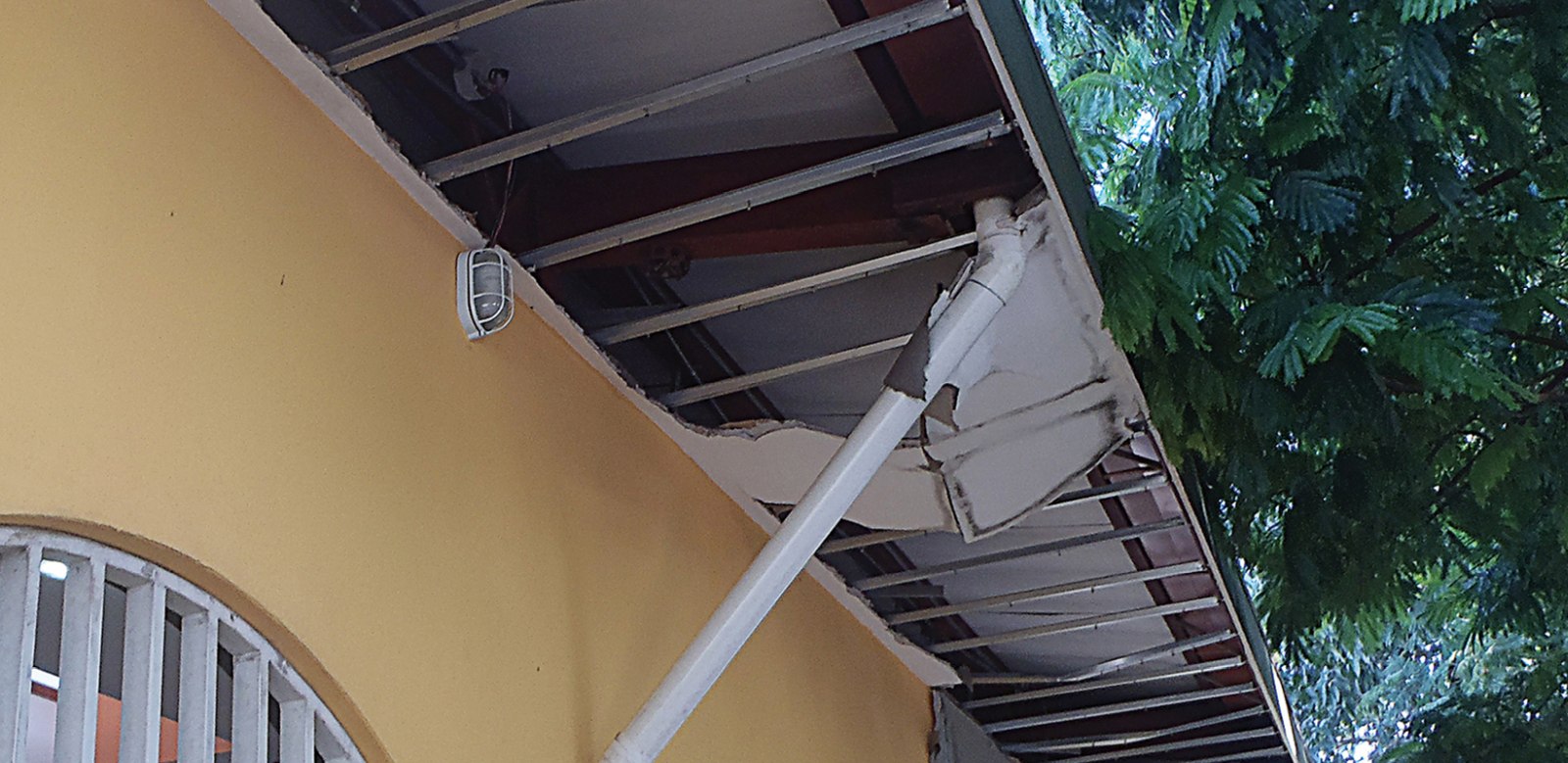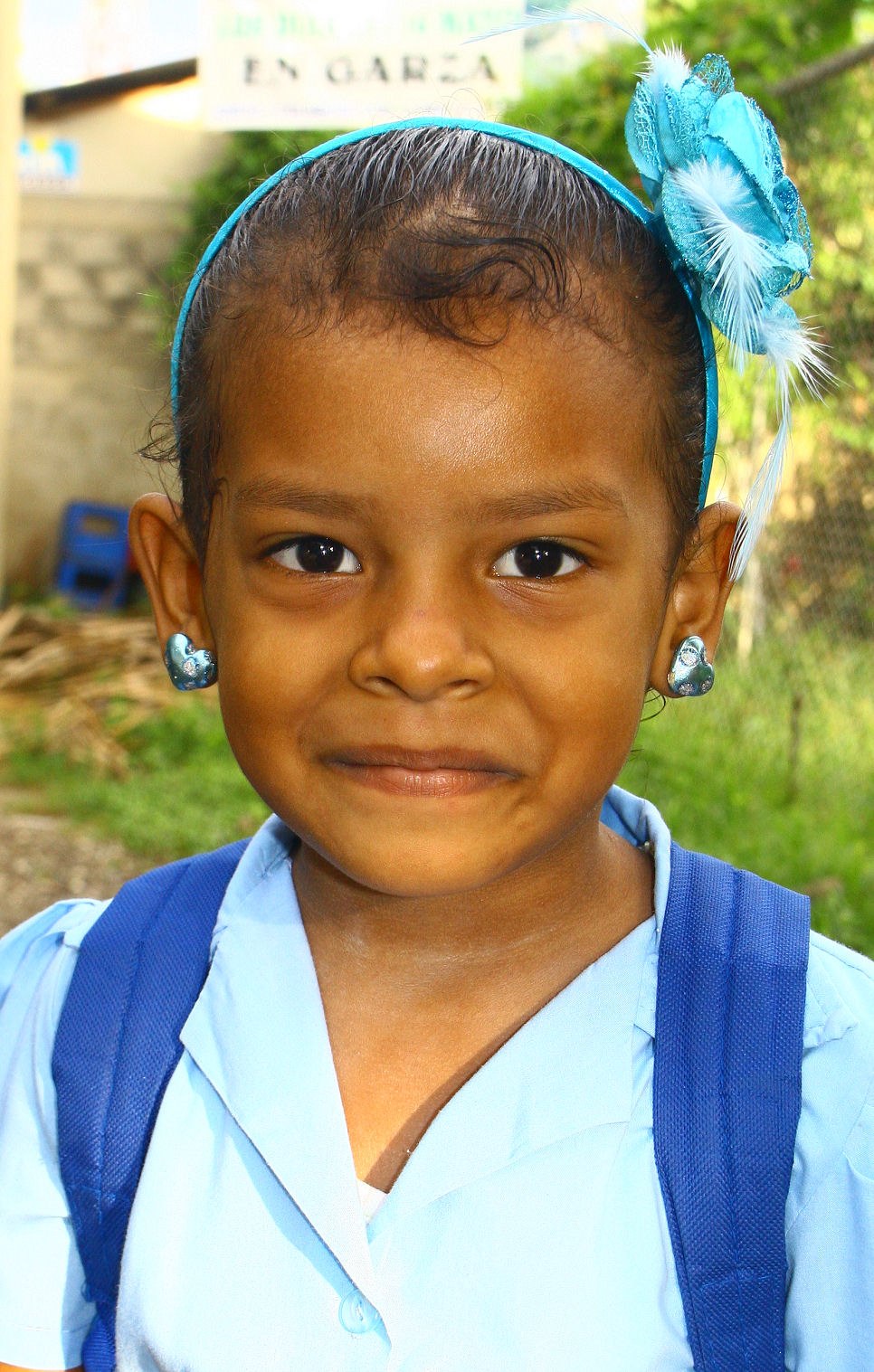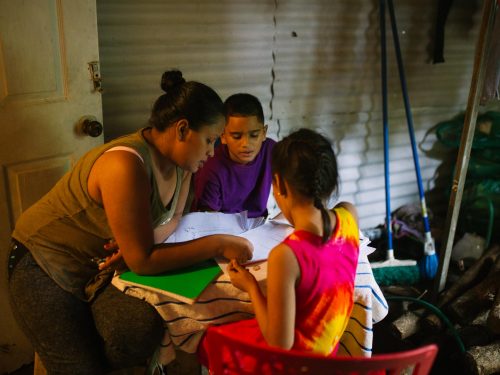
In some classrooms in the school of San Martin in Nicoya, the teachers do not turn the fans on because they are afraid that the ceiling will fall on them and the students. In a canton where everyone suffers through days when the temperatures reach 37 degrees Celsius (about 99 Fahrenheit), it is barely tolerable with fans. Imagine studying shut up in a classroom, moving the desks around to escape the sun as the day passes.
And this is just one of the 600 schools in the country and the 102 in Guanacaste that suffer from the systematic neglect in which the Ministry of Public Education’s (MEP’s) infrastructure management has been stagnating for years.
In the national news, this entity has already become quite the character due to the absurd situation that MEP is only now making transparent: although every year it “used” all the allocated budget, sometimes permissions were not given to the administrative boards of education to build or repair the damages in the elementary and high schools. At other times, they simply did not follow up on the problems and they would stop worrying about it after just handing over the money.
The cover story of our April edition shows the most local examples of the consequences of that oversight: cracks in the walls, overcrowding, and hallways that should have been demolished five years ago. In some cases, warnings have been given by the Ministry of Health for almost ten years and have fallen on deaf ears.
The vulnerability that young people face when graduating from rural elementary or high schools, compared to those who study in the capital, is multiplied when the conditions in which they study are also of this caliber.
Many do not even have the possibility of going to another school because, as the only teacher in the one-room school of Playitas in Bagaces put it, with what money are they going to travel six kilometers (about 3.7 miles) to the next closest school? In the meantime, the teachers watch to make sure the children do not fall into the cracks in the ground.
The problem is not that there isn’t enough money, but that it is badly managed, as shown in an audit report about the department in May 2018.
Now that we know it, the silent cry of the buildings should be a critical juncture so the Ministry of Education and the educational centers begin to make joint decisions. If the schools continue to age without adequate care, if money continues to be given to the centers without any supervision and they are not helped to achieve their goals, the children of our province will continue to suffer worse consequences.
How can we hope that the younger generation reaches the university level and becomes the scientists and technologists that the country needs if we send them off to study in a hot classroom without fans?







Comments